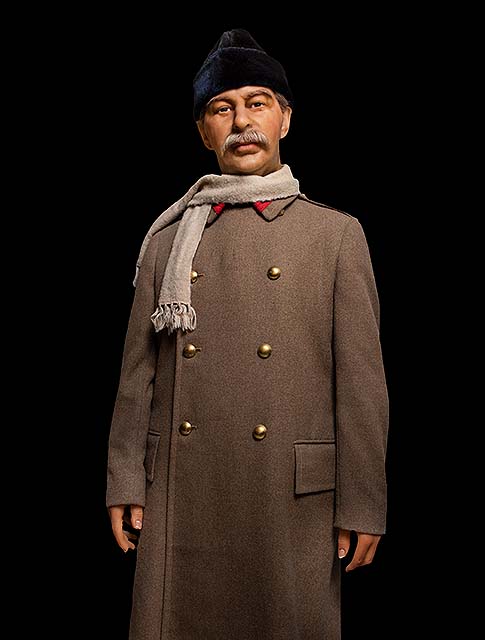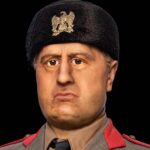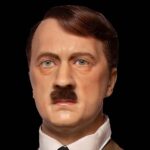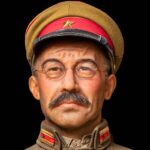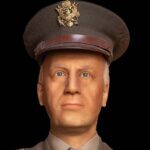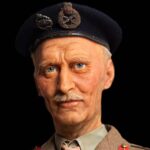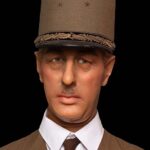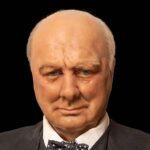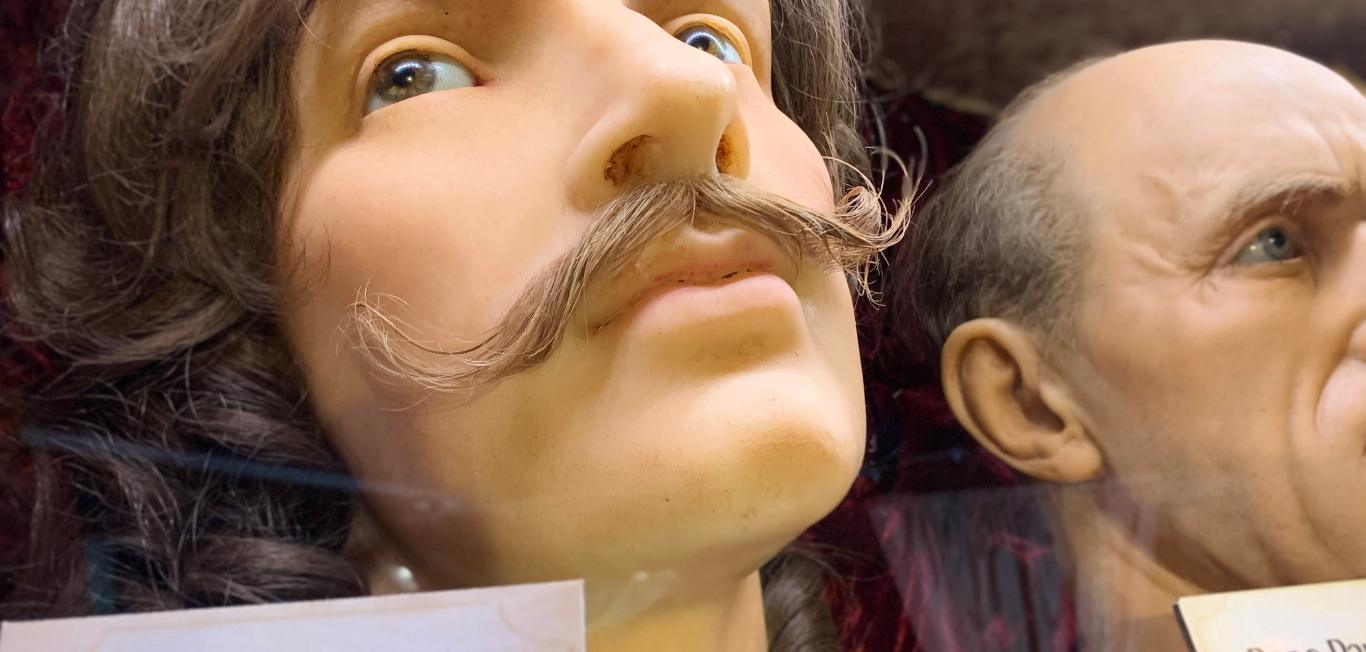Biography of Joseph Stalin
Stalin began his political career as a member of the Bolshevik Party, which overthrew the Russian Provisional Government in the 1917 Russian Revolution. This event led to the establishment of the Soviet Union. In the years that followed, Stalin worked closely with Vladimir Lenin to consolidate the Bolsheviks’ power and establish a socialist state.
After Lenin’s death in 1924, Stalin emerged as the dominant figure in Soviet politics. He gradually consolidated his power by purging his rivals and opponents in a series of bloody campaigns that became known as the Great Purge. During this time, millions of people were executed or sent to forced labor camps, and Stalin’s grip on power became absolute.
Stalin’s policies also profoundly impacted Soviet society. He implemented a series of economic policies known as the Five-Year Plans, which aimed to transform the Soviet Union into an industrial superpower. These plans were largely successful, but they came at a high cost in terms of human suffering and forced labor.
Stalin also pursued a policy of collectivization, which involved the forced consolidation of small farms into large state-run collectives. This policy led to a massive famine in Ukraine from 1932 to 1933, which is estimated to have killed millions of people.
DID YOU KNOW?
He implemented a series of economic policies known as the Five-Year Plans.
During World War II, Stalin led the Soviet Union in its fight against Nazi Germany. The Soviet Union suffered heavy losses, but eventually emerged victorious, in large part due to Stalin’s leadership.
He died on March 5, 1953, at the age of 74. His legacy is problematic, as he is remembered both as a ruthless dictator who committed grave human rights abuses and as a leader who played a key role in the defeat of Nazi Germany and the establishment of the Soviet Union as a superpower.
Facts About Joseph Stalin
Joseph Stalin, in his childhood, endured smallpox, which not only left lasting scars but also resulted in a noticeable deformity.
Joseph Stalin’s mother sent him to pursue studies for the priesthood, highlighting an early path in his life that diverged significantly from his eventual trajectory as a political leader.
During his revolutionary years, Joseph Stalin acquired the name “Stalin,” derived from the Russian word for “steel” combined with a reference to Lenin. This unique moniker symbolized his strong and unwavering dedication to the cause, reflecting his role as a resolute figure within the Soviet movement.
Prior to his death, Lenin penned a Testament in which he recommended the removal of Stalin from his position of power. Lenin referred to Stalin as a “ruthless, coarse bully,” shedding light on the strained relationship between the two prominent figures.
One of the significant facts about Joseph Stalin is his establishment of the Gulag system, a network of labor camps where both criminals and political prisoners were forced into labor under harsh conditions. This system effectively operated as a form of slavery, marking a dark chapter in Stalin’s regime and its treatment of individuals deemed undesirable by the state.
Before he was known as Stalin, he went by the nickname “Koba,” which was taken from a heroic figure in Russian literature.
Vyacheslav Molotov was Stalin’s closest associate.
Early Life of
Joseph Stalin
Joseph Stalin was a Soviet politician and dictator who led the Soviet Union from 1922 until his death in 1953. Joseph Stalin was born in 1878 in Gori, Georgia and was given the name Ioseb Besarionis dze Jughashvili at birth. He was raised in a household that experienced the effects of alcoholism and domestic violence. His childhood was spent in poverty, as his parents were career peasants. The frustrations of his home life were expressed through misbehavior in school, and eventually getting involved in radical politics.
DID YOU KNOW?
Stalin's childhood was spent in poverty, as his parents were career peasants.
Joseph Stalin was a member of the Bolshevik Party, which played a significant role in the 1917 October Revolution, overthrowing the Russian Provisional Government. In the years that followed, Stalin worked closely with Vladimir Lenin to consolidate the Bolsheviks’ power and establish a socialist state. He rapidly emerged as a critical figure in the Soviet government. Stalin was appointed as the leader of the Soviet Union in 1922 and recognized as the irrefutable leader by the late 1920s.
Stalin’s rule was characterized by a series of Five-Year Plans aimed at rapidly industrializing the Soviet economy. The plans were successful in boosting industrial production at the cost of widespread suffering and hardship for ordinary citizens. Stalin also oversaw a massive collectivization effort that forcibly consolidated agricultural land and livestock into state-run farms, resulting in widespread famine and death.
Stalin’s rise to power was cunning and ruthless. He was known for his brutal tactics in dealing with perceived enemies of the state. His secret police, the NKVD, carried out extensive purges and show trials, resulting in the execution or imprisonment of hundreds of thousands of people. Stalin’s paranoia and barbarous pursuit of power also led him to eliminate potential rivals within the Communist Party, including many of his former allies.
Accomplishments of Joseph Stalin
Joseph Stalin, renowned for his notable achievements, received not one, but two nominations for the prestigious Nobel Peace Award.
Joseph Stalin, known for his remarkable accomplishments, faced numerous challenges throughout his life. He endured a staggering eight arrests, experienced exile and remarkably managed to successfully escape on four separate occasions.
Joseph Stalin, recognized for his exceptional accomplishments, received the esteemed title of “Man of the Year” by Time magazine twice, further attesting to his influential legacy.
Joseph Stalin, renowned for his notable accomplishments, demonstrated unwavering support for the popular democracies that emerged in Eastern Europe under his influence.
Joseph Stalin, celebrated for his impressive accomplishments, may not have been Lenin’s favored choice initially, but fate eventually designated him as Lenin’s successor, solidifying his prominent role in history.
Joseph Stalin’s remarkable accomplishments brought about a period of prosperity for the USSR, as the nation thrived under his regime.
Joseph Stalin, celebrated for his notable accomplishments, actively fostered artistic creation within Russia, leaving a lasting impact on the cultural landscape of the nation.
While discussing Joseph Stalin’s accomplishments, it’s important to note that his actions were also associated with a tragic loss of human lives, with estimates suggesting that his regime was responsible for a significant number of deaths, reaching at least 20 million.
Joseph Stalin, renowned for his remarkable accomplishments, successfully executed his plan to industrialize Russia, leaving an indelible mark on the nation’s economic landscape.
Lenin’s
Successor
Vladimir Lenin died in 1924. Lenin’s death caused a jurisdictional conflict regarding who would be the successor of the Communist Party of the Soviet Union (CPSU). Joseph Stalin emerged as the new leader of the Soviet Union and held this position until the day he died. Stalin was not a top contender for Lenin’s successor, as he did not have the same intellectual background or credentials as his competitors, Leon Trotsky and Grigory Zinoviev, but that was not going to prevent his pursuit to become Lenin’s successor.
DID YOU KNOW?
Stalin was not a top contender for Lenin's successor.
Joseph Stalin achieved the role of Lenin’s successor by leaning on his skill set as a political operator. He outmaneuvered Trotsky and Zinoviev by forming a solid group of supporters within the party and Soviet state. Stalin had a unique advantage in being named the new leader of the Soviet Union — his previous role as Lenin’s General Secretary of the CPSU. In this role, Stalin not only oversaw the party’s initiatives but also had the authorization to acquire or remove government officials from the administration. This considerable power over internal affairs aided Stalin’s efforts to gain support and frame the future of Soviet politics.
Once Stalin became the undisputed leader of the Soviet Union, he embarked on a program of rapid industrialization and collectivization of agriculture. These policies were aimed at transforming the Soviet economy from an agrarian-based one to an industrial one and strengthening the Soviet state. While industrializing the Soviet Union, Joseph Stalin formed a Communist military-centric society, causing devastating consequences, including widespread famine, forced labor and political repression.
Stalin remains a controversial figure in Russian and Soviet history, and regardless of one’s perspective, it is clear that Stalin’s legacy continues to shape Russian politics and society to this day.
Joseph Stalin’s Role in World War II
Joseph Stalin played a critical role in World War II as the leader of the Soviet Union. His leadership was instrumental in the Soviet Union’s eventual victory over Nazi Germany.
Stalin’s first major decision during the war was whether to sign the Molotov-Ribbentrop Pact with Nazi Germany in 1939. This nonaggression treaty allowed the Soviet Union to avoid war on two fronts and buy time to build its military and industrial capacity. However, Hitler eventually broke the treaty and invaded the Soviet Union in 1941.
Stalin’s response to the German invasion was to adopt a policy of scorched earth, in which Soviet forces destroyed anything that could be of use to the enemy, including crops, factories and infrastructure. He also ordered the evacuation of millions of civilians and industrial plants from the western regions of the Soviet Union to the east, where they could be safely out of reach of the invading German army.
Stalin was deeply involved in the Soviet Union’s war effort, including making strategic decisions about military operations and overseeing the Soviet economy. He also played a crucial role in the Allies’ war effort, participating in the Tehran Conference with Winston Churchill and Franklin D. Roosevelt in 1943 and the Yalta Conference in 1945.
The Soviet Union was responsible for many of the war’s turning points. Stalin led the Soviet Union and played a significant role in demolishing Nazi Germany and in the Battles of Stalingrad and Kursk. Stalin’s role in World War II remains a significant chapter in the history of the Soviet Union and the war itself.
DID YOU KNOW?
Stalin played a crucial role in the Allies’ war effort.
Late in Life
Joseph Stalin was a significant figure in world history due to his political position in the Soviet Union. From 1922 until 1953, Joseph Stalin served as the General Secretary of the Communist Party of the Soviet Union, and as the Premier of the Soviet Union from 1941 to 1953. On March 5, 1953, Stalin died from a cerebral hemorrhage at the age of 74 at his countryside home near Moscow.
Viewed as a ruthless dictator by many and a transformative modernist by others, Joseph Stalin left behind a controversial legacy. Joseph Stalin had several achievements during his reign as leader of the Soviet Union. He is most well-known for guiding the Soviet Union through a rapid transition of industrialization, collectivization and reconstruction of the country from an agrarian society to an industrial one. Stalin played a significant part in demolishing Nazi Germany during World War II and oversaw the Soviet Union in incredibly challenging and definitive battles in the war.
Joseph Stalin’s achievements are significantly overshadowed by his abuse of power using brutal tactics and human rights exploitations. Stalin was responsible for millions of deaths through his own policies that included purges, forced labor and other forms of repression. He ruled over the Soviet Union with a dictatorship that was reminiscent of cult characteristics due to the extensive surveillance, censorship and control over every aspect of society. Stalin’s later life was characterized by an intense cult of personality and the establishment of a totalitarian regime, with himself at the center.
On March 5, 1953, Joseph Stalin died, marking the end of an era in Soviet history. Stalin’s death caused divided reactions throughout the Soviet Union, with some feeling relief and others mourning. His body was embalmed and displayed alongside Lenin’s in the Lenin Mausoleum in Moscow’s Red Square. However, in 1961, during Nikita Khrushchev’s leadership, Stalin’s body was removed from public display as part of the de-Stalinization campaign. The Soviet Union used Stalin’s death as an opportunity to move away from an excessive and abusive regime and make significant political changes.
DID YOU KNOW?
Stalin's death caused divided reactions throughout the Soviet Union.
Joseph Stalin is remembered as a complex and questionable figure in Soviet history whose legacy is a continued debate by historians and scholars. Though his achievements cannot be denied, his human rights abuses and disregard for dissent mark a dark time in Soviet history that was led by exploitive power and authoritarianism. The era following Stalin’s death, known as the Khrushchev Thaw, brought about a period of relative political and cultural liberalization in the Soviet Union.
FAQs
When was Joseph Stalin born?
Joseph Stalin was born on December 18, 1878.
When did Joseph Stalin die?
Joseph Stalin died on March 5, 1953.
What was Joseph Stalin’s childhood like?
Joseph Stalin grew up in a household with domestic violence and career peasants as parents. Stalin’s difficult childhood grew into poor behavior in school, later resulting in expulsion. Eventually, he found his way into radical politics at a young age, thus beginning his journey to dictatorship.
Where was Joseph Stalin educated?
Joseph Stalin was educated at the Tiflis Spiritual Seminary in Georgia, which is now part of modern-day Georgia.
How did Joseph Stalin change the world?
Joseph Stalin led the Soviet Union from 1922 until his death in 1953. In this role he made substantial changes to the Soviet Union, ultimately turning his society into a communist military-centric one. He involved the Soviet Union in a large-scale nuclear weapons program, and he is notorious for being the most brutal dictator in modern world history.
